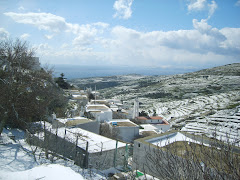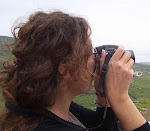 Infusion stills from the filmby Marcus Tomlinson, 2004 Copyright Atopos - Marcus Tomlinson
Infusion stills from the filmby Marcus Tomlinson, 2004 Copyright Atopos - Marcus TomlinsonOCTOBER, 5TH-6TH 2009
NATIONAL INSTITUTE OF HISTORY OF ART (INHA), PARIS
The discipline of Archeology was born in the XVIIIth century under the impulsion of the famous excavations of Pompei and Herculanum. By the XXth century it had slowly developed into a truly scientific field for the study of material remnants of past civilisations and their environments, also able to shed new light on current societal questions.
Archeometric methods have contributed significantly to make archeology a science of precision. But archaeology has also always been a fabulous resource for the imagination of countless artists, writer and scholars. From the Renaissance to Romanticism, ruins were used first as a motif, then as a pictorial genre. During the same period, the archeological model blossomed in literature, notably with Théophile Gauthier’s Arria Marcella and Jensen’s Gradiva. Thereafter, it was used by Freud as a metaphor to translate the psychoanalytical method. As of the 1960s, archaeology appeared frequently in the 7th art while contemporary art developed a new vocabulary (Land Art, Arte Povera), with artists such as Anne and Patrick Poirier opening new perspectives through the use of organic and archaic materials and antique design.
This conference will address the largely neglected relationship between artistic and archeologicalpractices. Our aim is to observe how artists use archeological procedures, how they modify and adapt them to serve their own purposes and how this aesthetically affects their art. Our first focus will be on artistic works that are directly inspired by archaeology: its technical and practical vocabulary (survey, dig, inventory, museography); its visual language (drawing, stratigraphy, grid), its materials and tools (molding, photography, material as object study). This will lead us to reflect on the importance of the visual representation in archaeology, as visual testimony of the excavated site.
Artists and archeologists both have a strong relationship with ‘the site”. They are physically and mentally invested in the surrounding space, and their gestures are often similar. They both extract meaningful objects from matter and from the site. Artists and archeologists both investigate a field that is firmly rooted in their own personal relationship to time and space. For Leonardo da Vinci, painting and art in general were cosa mentale; we propose to explore the mental processes that ccompany the artist and the archeologist at work, between interpretation and invention.
Themes:
All of these questions will be addressed during the conference, structured according to the following themes:
1. Antiquities and antiques in contemporary artPast and future ruins, traces. Contemporary shapes inspired from antiquity.
2. Time and “printing” of timeResearch of origins and mythologies. Drawings, stratifications. Urban and ghost memories. Methodological questions: chronological extension of archaeology to contemporary art.
3. Site and MaterialsRelations with the site and with raw materials. Earth, site, landscape. On site body engagement. Gestures.
4. Archaeologists versus Artists and Forgers?Authenticity and fakes: fake excavations, museographical production / mise en scène.
5. Disappearance and rediscovery: archaeology as a contemporary myth?Philosophical approach. Science and rationality questioned by artistic games. Leading the spectator to doubt reality. Visual and poetic imagery to develop a story, contemporary myths, or as an invitation to meditation.
CALL FOR PAPERS:
We invite stimulating papers that discuss the relation between contemporary art and archaeology.If you are interested in participating, please submit a summary of 300-400 words before March 31st 2009.
ORGANIZERS:
Audrey Norcia, Ph.D candidate in History of Art. Research director: Philippe Dagen.Paris 1 - ED 441 - CIRHAC (Centre Inter-universitaire d’Histoire de l’Art Contemporain). didsoftly
Michaël Jasmin, Ph.D in Archaeology (Paris 1, Panthéon-Sorbonne).UMR 70.41 (Archéologies et Sciences de l’Antiquité). Maison René Ginouvès de l’Archéologie et de l’Ethnologie. mjasmin
NATIONAL INSTITUTE OF HISTORY OF ART (INHA), PARIS
The discipline of Archeology was born in the XVIIIth century under the impulsion of the famous excavations of Pompei and Herculanum. By the XXth century it had slowly developed into a truly scientific field for the study of material remnants of past civilisations and their environments, also able to shed new light on current societal questions.
Archeometric methods have contributed significantly to make archeology a science of precision. But archaeology has also always been a fabulous resource for the imagination of countless artists, writer and scholars. From the Renaissance to Romanticism, ruins were used first as a motif, then as a pictorial genre. During the same period, the archeological model blossomed in literature, notably with Théophile Gauthier’s Arria Marcella and Jensen’s Gradiva. Thereafter, it was used by Freud as a metaphor to translate the psychoanalytical method. As of the 1960s, archaeology appeared frequently in the 7th art while contemporary art developed a new vocabulary (Land Art, Arte Povera), with artists such as Anne and Patrick Poirier opening new perspectives through the use of organic and archaic materials and antique design.
This conference will address the largely neglected relationship between artistic and archeologicalpractices. Our aim is to observe how artists use archeological procedures, how they modify and adapt them to serve their own purposes and how this aesthetically affects their art. Our first focus will be on artistic works that are directly inspired by archaeology: its technical and practical vocabulary (survey, dig, inventory, museography); its visual language (drawing, stratigraphy, grid), its materials and tools (molding, photography, material as object study). This will lead us to reflect on the importance of the visual representation in archaeology, as visual testimony of the excavated site.
Artists and archeologists both have a strong relationship with ‘the site”. They are physically and mentally invested in the surrounding space, and their gestures are often similar. They both extract meaningful objects from matter and from the site. Artists and archeologists both investigate a field that is firmly rooted in their own personal relationship to time and space. For Leonardo da Vinci, painting and art in general were cosa mentale; we propose to explore the mental processes that ccompany the artist and the archeologist at work, between interpretation and invention.
Themes:
All of these questions will be addressed during the conference, structured according to the following themes:
1. Antiquities and antiques in contemporary artPast and future ruins, traces. Contemporary shapes inspired from antiquity.
2. Time and “printing” of timeResearch of origins and mythologies. Drawings, stratifications. Urban and ghost memories. Methodological questions: chronological extension of archaeology to contemporary art.
3. Site and MaterialsRelations with the site and with raw materials. Earth, site, landscape. On site body engagement. Gestures.
4. Archaeologists versus Artists and Forgers?Authenticity and fakes: fake excavations, museographical production / mise en scène.
5. Disappearance and rediscovery: archaeology as a contemporary myth?Philosophical approach. Science and rationality questioned by artistic games. Leading the spectator to doubt reality. Visual and poetic imagery to develop a story, contemporary myths, or as an invitation to meditation.
CALL FOR PAPERS:
We invite stimulating papers that discuss the relation between contemporary art and archaeology.If you are interested in participating, please submit a summary of 300-400 words before March 31st 2009.
ORGANIZERS:
Audrey Norcia, Ph.D candidate in History of Art. Research director: Philippe Dagen.Paris 1 - ED 441 - CIRHAC (Centre Inter-universitaire d’Histoire de l’Art Contemporain). didsoftly
Michaël Jasmin, Ph.D in Archaeology (Paris 1, Panthéon-Sorbonne).UMR 70.41 (Archéologies et Sciences de l’Antiquité). Maison René Ginouvès de l’Archéologie et de l’Ethnologie. mjasmin




.jpg)




























Δεν υπάρχουν σχόλια:
Δημοσίευση σχολίου